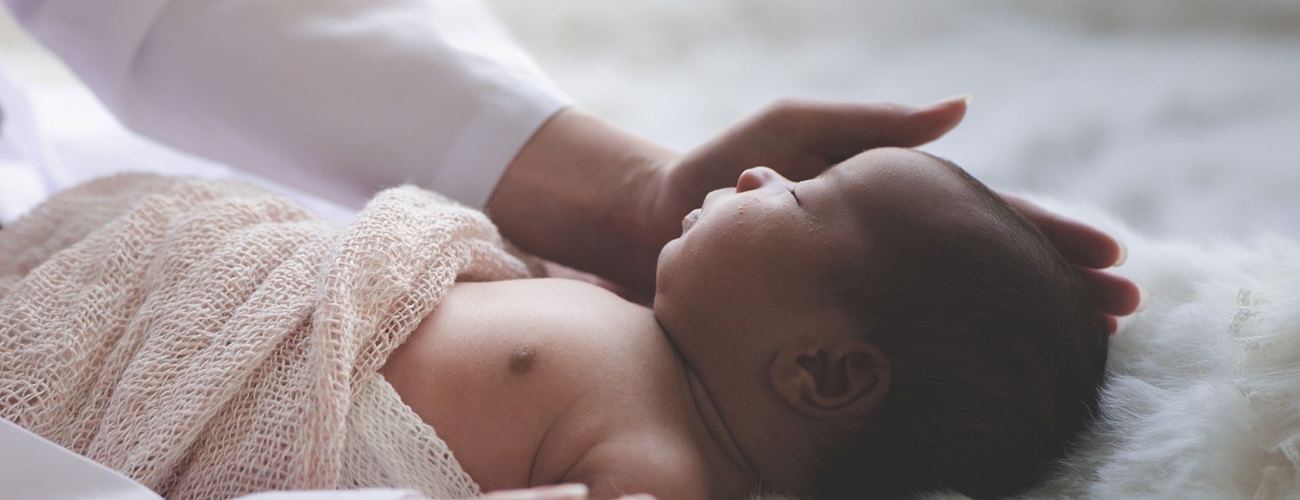Dextrocardia
Featured Expert:
Dextrocardia is a rare congenital (present at birth) heart defect, in which the heart is in an abnormal position in the chest. Dextrocardia occurs in about 1 in 12,000 pregnancies.
Pediatric cardiologist Ashish Doshi of the Blalock-Taussig-Thomas Pediatric and Congenital Heart Center reviews important information to know about dextrocardia, including symptoms to look for and treatment options.
What is dextrocardia?
In dextrocardia, the heart is positioned on the right side of the chest instead of its normal position on the left side.
Dextrocardia on its own does not usually cause problems, but it tends to occur with other conditions that can have serious effects on the heart, lungs and other vital organs.
What are the types of dextrocardia?
Dextrocardia can occur in different ways, and it may accompany other organ abnormalities or disorders.
Isolated dextrocardia
In isolated dextrocardia, only the heart is on the opposite side of the body, and there are no other abnormalities with the heart or other organs. Isolated dextrocardia is very rare.
Dextrocardia situs inversus
In dextrocardia with situs inversus, some other organs are also on the opposite side of the body. For example, the spleen may be on the right side of the body instead of its normal position on the left, or the liver is on the left side of the body instead of its normal position on the right.
Dextrocardia situs inversus totalis
In dextrocardia with situs inversus totalis, all the vital organs in the chest and abdomen are on the opposite side of the body from their normal location. The organs may work correctly, or there may be complications with breathing and other functions.
Dextrocardia with heterotaxy
In dextrocadia with heterotaxy syndrome, some or all of the vital organs are misplaced, or not in their normal positions in the body. Certain organs may be absent or only partially developed. Heterotaxy can cause severe health problems or death if untreated.
Dextrocardia and other congenital heart defects
Dextrocardia often accompanies other congenital heart defects, such as:
- Double outlet right ventricle (the aorta connects to the heart’s right ventricle instead of to the left ventricle)
- Endocardial cushion defect (the walls separating the four chambers of the heart do not form correctly)
- Pulmonary stenosis
- Tetralogy of Fallot
- Transposition of the great arteries
- Ventricular septal defect
Dextrocardia and Kartagener syndrome
Sometimes dextrocardia occurs as part of a genetic disorder called Kartagener syndrome. This disease causes problems with the cilia, which are the tiny hairlike structures that clean the air in our lungs and perform other functions in the body. In addition to respiratory problems, about half of people with Kartagener syndrome also have situs inversus totalis.
Dextrocardia Causes
Experts are not sure what causes dextrocardia. It occurs because the heart does not form correctly during fetal development.
Dextrocardia Symptoms
Isolated dextrocardia does not usually cause symptoms. But dextrocardia accompanied by other health conditions can cause:
- Breathing problems
- Cyanosis (bluish skin due to not enough oxygen in the blood)
- Failure to grow and gain weight
- Fatigue, especially when feeding
- Frequent sinus or lung infections
- Jaundice (yellow skin and eyes)
- Pallor (very pale skin)
Dextrocardia Diagnosis
Dextrocardia is usually diagnosed during a routine imaging exam, such as a chest X-ray, or when a health care provider is evaluating other heart problems. Sometimes the condition is never diagnosed if there are no symptoms.
Tests to look at the location and position of the heart may include:
Dextrocardia Treatment
In most cases, isolated dextrocardia does not require treatment. But many of the congenital conditions that accompany dextrocardia do require treatment, such as:
- Antibiotics to manage respiratory infections
- Medications to keep fluid out of the lungs
- Medications to help the heart pump blood more efficiently
- Pacemakers for certain heart problems, such as arrhythmias
- Surgery for congenital heart defects or problems with organs in the chest or abdomen
Dextrocardia Complications
The most serious dextrocardia complications occur when the vital organs do not work correctly or are not fully formed. These conditions can lead to:
- Congestive heart failure
- Infertility (in males with Kartagener syndrome)
- Intestinal blockages
- Respiratory failure
- Severe or repeated infections
- Death
Living with Dextrocardia
Children with dextrocardia who have no other congenital abnormalities can lead full, healthy lives. However, it is still important to tell your child’s health care providers about the condition. Knowing that the heart is on the opposite side of the chest may be important if a child needs medical tests or treatments in the future.





